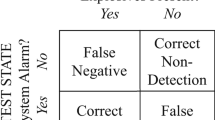Abstract
BIOLOGICAL assays may be divided into two main classes. In the first, which we may call Type I, the 'potency' of the test material, as compared with that of a standard preparation, refers only to its relative ability to produce certain effects in the experimental animals, no assumptions being made as to the substance or substances responsible for the effects. An example is the testing of extracts from plants for their insecticidal power. In Type II, however—and this must now be the larger class—the response of the experimental animals is used to estimate the content, in units of some kind (which may be either of an ad hoc nature or actual units of weight) per unit weight of test material, of a single substance producing the response in question. Into this category fall, for example, most assays of vitamins.
This is a preview of subscription content, access via your institution
Access options
Subscribe to this journal
Receive 51 print issues and online access
$199.00 per year
only $3.90 per issue
Buy this article
- Purchase on Springer Link
- Instant access to full article PDF
Prices may be subject to local taxes which are calculated during checkout
Similar content being viewed by others
References
Wood, E. C., NATURE, 153, 84 (1944).
Gridgeman, N. T., Biochem. J., 37, 127 (1943).
Finney, D. J., NATURE, 153, 284 (1944).
Author information
Authors and Affiliations
Rights and permissions
About this article
Cite this article
WOOD, E. Mathematics of Biological Assay. Nature 153, 681–682 (1944). https://doi.org/10.1038/153681a0
Issue Date:
DOI: https://doi.org/10.1038/153681a0
Comments
By submitting a comment you agree to abide by our Terms and Community Guidelines. If you find something abusive or that does not comply with our terms or guidelines please flag it as inappropriate.



